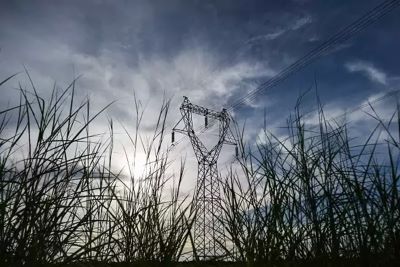Context
India's energy transition holds promise, buoyed by robust economic growth post-COVID-19 and a suite of favorable factors including a youthful demographic, diversified economy, and government initiatives supporting green manufacturing. However, a critical bottleneck looms large in the form of Distribution Utilities (DISCOMS), which remain the Achilles' heel of this transition. Despite multiple rounds of fiscal support, DISCOMS continue to struggle with inefficiency and poor performance, posing a significant threat to the progress of India's energy transition agenda.
Four principles for India’s clean energy and economic recovery programs
Here are the rephrased principles for India's clean energy and economic recovery programs:
● Embrace Cost-Effective Energy Solutions: Take advantage of the decreasing costs of clean energy technologies to transition towards economically viable options. Initiatives like the UJALA program, which significantly reduced the cost of LED bulbs, exemplify this approach. By prioritizing clean energy sources like solar and wind, even without subsidies, and transitioning to electric buses, economic savings can be redirected towards critical development needs while ensuring job protection and growth.
● Build Resilient and Secure Energy Systems: With the increasing threats of climate change and pandemics, focus on building resilience in various sectors, including energy, urban development, and transportation. India should aim to reduce reliance on commodity imports and foreign supply chains by promoting distributed energy systems and domestic manufacturing.
● Enhance Efficiency and Competitiveness: Given India's large scale and developmental stage, efficient resource utilization is crucial. Leveraging India's manufacturing capabilities and technological advancements through initiatives like Make in India can boost self-sufficiency and global competitiveness. Incorporating circular economy principles will further strengthen India's economy.
● Foster Social and Environmental Equity: Acknowledge India's significant economic growth alongside persistent social inequalities. Prioritize social and economic equity by investing in public health infrastructure and addressing environmental challenges such as air pollution, which disproportionately affects vulnerable populations. Ensure that investments in mitigating these issues prioritize equity and support the most affected communities.
Challenges Faced by DISCOMS
Distribution utilities serve as the intermediary between end consumers and clean electricity generation, making them pivotal in the energy transition landscape. Presently, distribution and retail supply are closely intertwined, except for large industrial consumers who have the option to access power directly from generators or self-generate. However, the financial health of DISCOMS remains precarious, with their inefficiency impeding the adoption of green electricity and jeopardizing transition targets.
An early resolution to the plight of insolvent DISCOMS seems elusive, as evidenced by recent recommendations from the Central Electricity Authority (CEA). The CEA suggests that state governments should prepare resource adequacy plans till 2030, aiming to de-risk 75 percent of power demand through long-term power purchase agreements. However, such measures tether India to shallow power markets for the next two decades, posing significant challenges to the energy transition agenda.
Government Interventions and Their Impact
Government interventions, including fiscal support schemes such as the Revamped Distribution Sector Scheme, inject substantial financial assistance into DISCOMS to upgrade infrastructure and install meters. However, these measures offer temporary relief and do not address the underlying systemic issues plaguing DISCOMS. Furthermore, reliance on government guarantees for renewable energy projects exposes private generators to payment risks from DISCOMS, potentially escalating prices and undermining the attractiveness of renewable energy sources.
While privatization presents itself as a potential solution for fiscally constrained governments, it is not a panacea for the challenges faced by DISCOMS. The correlation between ownership structure and performance is weaker than expected, highlighting the need for comprehensive reforms beyond mere ownership changes. Moreover, the heavy hand of public ownership continues to dominate the electricity supply industry, posing challenges to the adoption of disruptive changes necessary for revitalizing DISCOMS.
Regulatory Framework and Reforms
State Electricity Regulatory Commissions are tasked with reforming DISCOMS, yet more than two decades after the passage of the Electricity Act 2003, challenges persist. Distorted tariffs, unpaid bills, and burgeoning regulatory assets impede the financial stability and growth prospects of DISCOMS. Regulatory frameworks must incentivize DISCOMS to become profitable entities with robust balance sheets, capable of supporting prudent debt financing for future investments.
Three key reform steps are essential to fostering healthier DISCOMS. Firstly, amending the Electricity Act to ensure that tariffs reflect the economic costs and return on investments, thus providing a foundation for profitability and managerial incentives for efficiency. Secondly, enhancing the autonomy of electricity regulators through a dual mandate shared between the Union and state governments, akin to the successful model adopted by the GST council. Lastly, liberalizing electricity markets to introduce competition and choice, thereby stimulating efficiency and innovation within the sector.
Conclusion
In conclusion, the revitalization of Distribution Utilities (DISCOMS) is imperative for India's energy transition journey. While government interventions and fiscal support schemes offer temporary relief, comprehensive reforms addressing the underlying systemic issues are necessary for sustainable progress. By amending regulatory frameworks, enhancing autonomy, and fostering competition within the electricity sector, India can pave the way for a robust and resilient energy transition. Failure to address the challenges faced by DISCOMS risks derailing India's energy transition agenda, underscoring the urgency of disruptive reforms to ensure a sustainable and prosperous future.
|
Probable Questions for UPSC Mains Exam
|
Source – The Hindu







